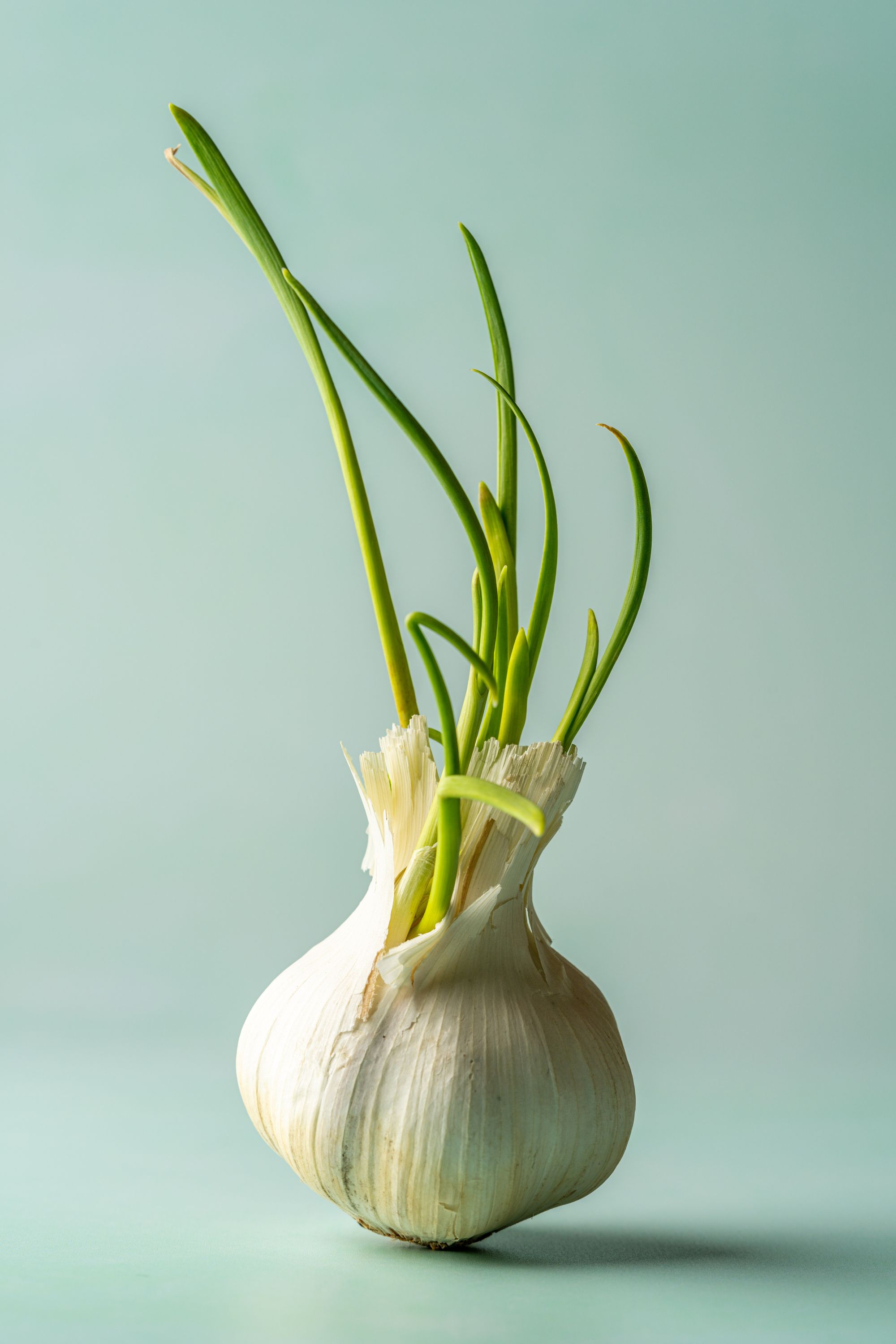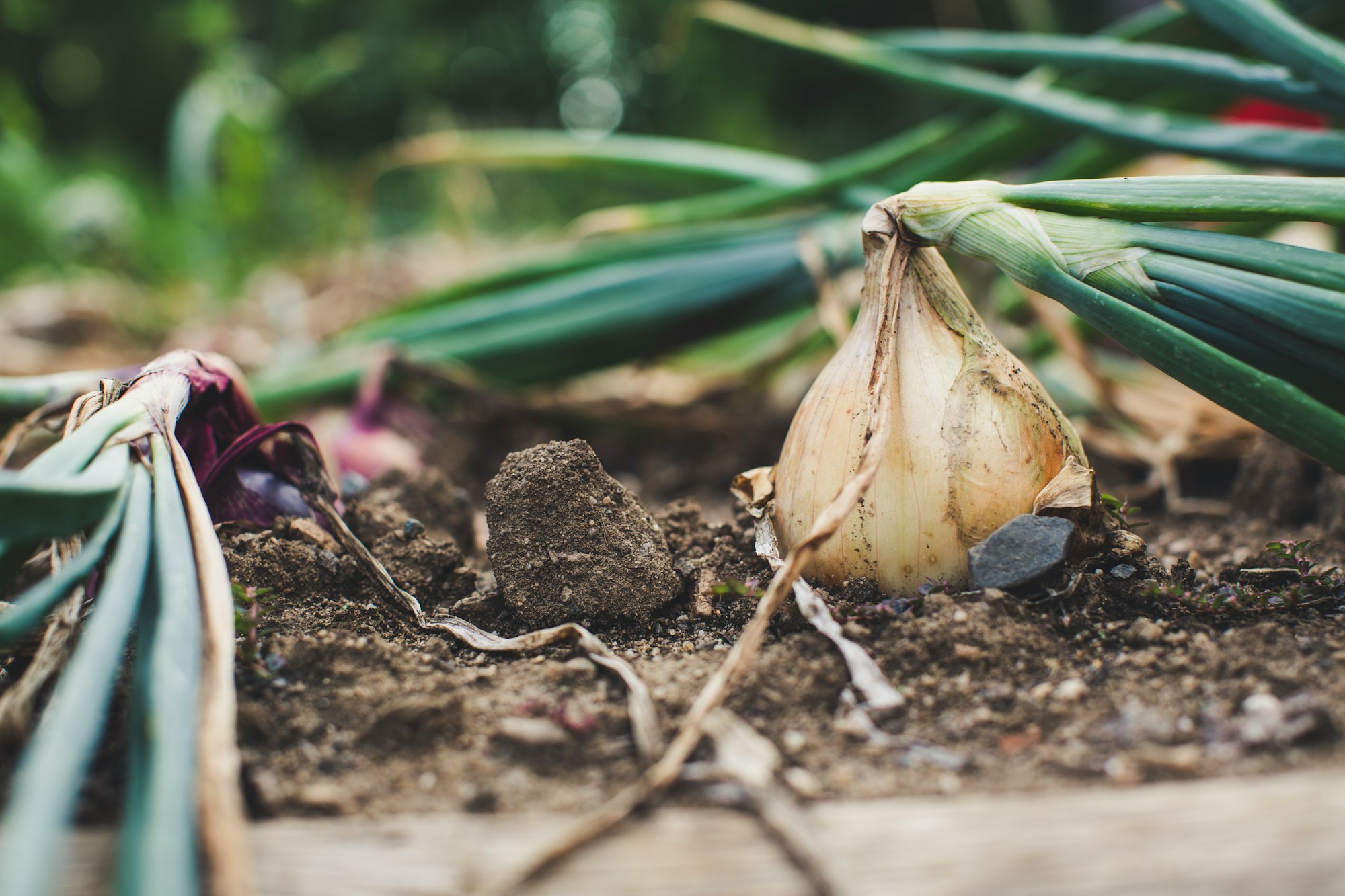How to Grow Garlic
Garlic is a versatile Allium sativum plant that can be used in various culinary dishes. With different types of garlic available, including softneck and hardneck varieties, you can choose the best one for your garden and taste preferences.

Table of Contents
To successfully grow garlic, plant cloves in well-draining soil about 6-8 weeks before the first frost in fall.
This allows the bulbs to experience a necessary cold period, leading to larger bulbs when harvested in the following summer.
About Garlic Plant
Garlic (Allium sativum) is a bulbous plant native to Asia and a close relative of onions and leeks.
It has been cultivated for thousands of years and is widely used for its pungent flavor in countless recipes.
There are two main types of garlic: hardneck and softneck. Hardneck varieties produce a flowering stalk called a scape, while softneck varieties do not.
Elephant garlic is a larger variety that is milder in flavor.
You'll plant individual cloves when growing garlic, developing into bulb clusters containing numerous garlic cloves.
Watch out for pests like onion maggots, which can affect your garlic plants.
Growing Garlic
Choose the right type of garlic for your climate: hardneck varieties are suited for cold winters, while softneck varieties prefer mild winters.
Purchase garlic bulbs or cloves from a reliable source, ensuring they are healthy and damage-free.
Before planting, prepare your soil by loosening it to a depth of at least 8 inches, and mix in some well-rotted manure or slow-release granular organic fertilizer.

Break the garlic bulbs into individual cloves, leaving as much of the papery covering on each clove intact.
Plant cloves 3 to 4 inches deep, with the pointy ends facing up, and space them about 6 inches apart in rows 12 to 18 inches apart.
Garlic prefers full sun and well-drained soil, so choose a suitable spot in your garden or use a pot with a well-drained potting mix and drainage holes.
Plant garlic in the fall, about six weeks before the ground freezes, allowing time for the roots to grow before winter dormancy.
As the plants emerge, add a layer of straw or mulch to keep the soil moist, suppress weeds, and provide insulation against frost.
Water when the soil is dry, but avoid overwatering, as damp conditions can promote rot and disease.
Keep your garlic bed free of weeds by hoeing gently around the plants, taking care not to damage the bulbs or roots.

Caring For Garlic Plant
Sun and Temperature
Garlic needs full sunlight for optimal growth, so pick an area with at least 6 hours of direct sunlight daily.
The plant can tolerate cold temperatures but avoid planting it in spots that experience wet and heavy frost.
Water and Humidity
Water your garlic plants regularly, keeping the soil consistently moist but not waterlogged.
Avoid overwatering, as excess moisture can cause the bulbs to rot. Aim for a moderate humidity level for optimal growth.
Soil
Garlic thrives in well-drained, fertile soil with a pH between 6 and 7.
Incorporate compost or organic matter to improve soil quality to start your garlic well.
Raised beds can also be beneficial for drainage and soil temperature regulation.

Fertilizer
Feed your garlic with nitrogen-rich fertilizer to encourage strong growth.
Start applying fertilizer when the shoots emerge in the spring, and continue providing nutrients throughout the growing season.
Repotting
Since garlic plants grow deep roots, they are best grown in the ground or in deep containers.
Repotting is not recommended, but ensure the new location has well-drained soil and plenty of sun.
Pruning and Propagation
To encourage the growth of large bulbs, remove garlic scapes (flower stems) as they appear. This diverts energy to bulb development.
Propagate garlic by planting individual cloves in the fall to get new plants for the following year.
Remember to space them about 4 inches apart and plant them at a depth of 2 inches.
Troubleshooting Plant Problems
Growing Problems
Garlic prefers well-drained soil with a pH between 6.0 and 7.0. If your garlic plants are struggling, test your soil and amend it with compost or lime as needed.
Also, plant suitable garlic varieties for your region, as there can be significant differences in growth habits and disease resistance.
Another issue could be planting kitchen scraps, which may lead to suboptimal growth or lack of sprouting.
It is best to purchase certified, disease-free seed garlic for planting.

Pests and Diseases
A few of the most common pests and diseases affecting garlic are white rot, bulb mites, onion maggots, and onion white rot.
You can use the following strategies to manage these issues:
- White rot: Remove affected plants and avoid planting in the same area for several years. Practice crop rotation and provide adequate spacing between plants.
- Bulb mites: Implement deep fall plowing to bury the mites and their eggs—also, practice crop rotation with non-allium plants.
- Onion maggot: Use floating row covers to prevent adult flies from laying eggs near the plants. Dispose of infected plants promptly.
- Onion white rot: Practice crop rotation and avoid planting alliums in the same area for several years. Keep the site weed-free and apply fungicides if necessary.

Companion Planting
Companion planting can help deter pests, attract beneficial insects, and improve soil conditions. When growing garlic, consider interplanting with:
- Carrots and beets: These root vegetables help break up the soil, making it easier for garlic to grow.
- Spinach and lettuce: These leafy greens provide ground cover, helping to maintain soil moisture and reduce weed growth.
- Roses and raspberries: Garlic has natural pest-repellent properties, making it a great companion for these plants susceptible to pests like aphids.
Avoid planting garlic near legumes (beans and peas), as they may hinder each other's growth.
Conclusion
Planting garlic is best done in the fall, about 6-8 weeks before the first frost, ensuring bigger bulbs as they go through a cold period.
Consider the hardiness zones 4 through 8 when choosing an appropriate planting location for your garlic variety.
Caring for garlic involves providing well-drained, moisture-retentive soil with a pH between 6.0 and 7.0.
Keep an eye on weeds, as they can overtake young garlic plants if not controlled early.
Garlic leaves can be used in cooking, but avoid confusing them with similar-looking plants like wild garlic.
When it's time to harvest, curing garlic is essential for preserving its flavor and preventing spoilage.
Choose between softneck and hardneck varieties, considering their differences in storage and taste.
Following these guidelines, you can enjoy a bountiful garlic harvest and savor its unmistakable flavor in your dishes.
Frequently Asked Questions
What are the ideal planting conditions for garlic?
Garlic thrives in well-draining, fertile soil with a pH between 6.0 and 7.0.
Ensure your planting area receives at least 6 hours of sunlight daily for optimal growth.
How deep and far apart should garlic cloves be planted?
Plant garlic cloves about 2 inches deep and 4 inches apart. Make sure the pointed end of each clove faces upward, and maintain a row spacing of 12 to 18 inches.
What are the best companion plants for garlic?
Garlic benefits from being planted near carrots, beets, spinach, and kale.
However, avoid planting garlic close to legumes, such as beans and peas, as it may stunt their growth.
Can garlic be grown indoors successfully?
You can grow garlic indoors with adequate sunlight—or artificial light—and proper care.
Plant cloves in a well-draining container with fertile soil and place it in a sunny location.
When is the right time to harvest garlic?
Garlic is typically ready for harvest 7 to 8 months after planting when most leaves have turned yellow and dried up.
Be careful not to wait too long, as thoroughly dried leaves can lead to damaged bulbs.
Where is the recommended place to purchase garlic bulbs for planting?
We recommend purchasing certified disease-free garlic bulbs from a trusted local nursery, a reputable online seller, or a specialized garlic farm.
This ensures you get healthy, high-quality bulbs for your garden.



